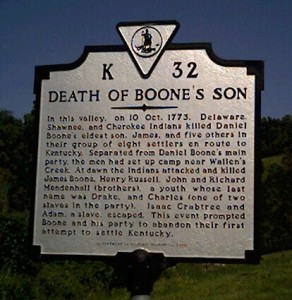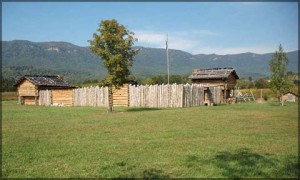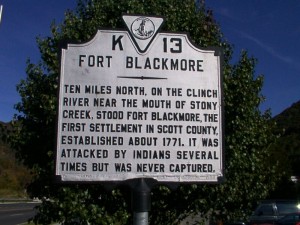http://www.rootsweb.ancestry.com/~vapittsy/Oaths.html
copy done by Cynthia Hubbard Headen
source: The Magazine of VA Genealogy, v.23, #1 (Feb.1985),
transcribed by Marian Dodson Chiarito
These lists were taken from a typewritten copy found in the Clerk’s Office, Pittsylvania County, at Chatham, Virginia. The two following affidavits found attached to the copy are self- explanatory.
I, S. H. F. Jones, do hereby certify that about the year 1930 I personally copied and had checked the names of persons who took the oath of Allegiance in 1777 as shown by manuscripts then in the Clerk’s Office of Pittsylvania County, Virginia. The writing was faded and a few names could not be deciphered. Every effort was made to transcribe the names as they appeared on the manuscripts. The names of the foregoing Lists are a true and correct copy of the aforesaid manuscripts to the best of my knowledge and belief. The lists were also checked by Mr. Langhorne Jones, atty.
Given under my hand and seal this 8th day of November, 1939.
S. H. F. Jones (Seal)
State of Virginia
Pittsylvania County, To-wit:
I, E. E. Friend, Clerk of the Circuit Court of Pittsylvania County, Virginia, the same being a Court of Record, do hereby certify that Mrs. S. H. F. Jones whose name is signed to the foregoing writing bearing date 8th day of November 1939, personally appeared before me in my county, Office and State aforesaid and made oath that the foregoing statements are true to the best of her knowledge and belief. Given under my hand this 8th Nov. 1939.
E. E. Friend
Clerk Pittsylvania Circuit Court
Chatham, VA
List of George Carter
Beverly Barksdale
William Bennett
Jno. Campbell
Abrm. Chaney
Jacob Chaney
Joseph Chaney
Zekial Chaney
Chas. Chelton
Mark Chelton
Thos. Chelton
Jno. Chilton
William Chilton
Matthew Cox
Thomas Crain
James Craine
Thomas Creal
Jno. Creel
Jeremiah Deadman
Elisha Dodson
Geo. Dodson
Lazarus Dodson
Rolly Dodson
Thos. Dodson
John Fitzgerald
Daniel Gardner
Heath Gardner
Nath. Gardner
Sylvany Gardner
James Haggard
Henry Harding
Martin Harding
Geo. Hardy, Jun.
Joshua Hardy
William Hardy
Micajah Harley
John H. Hedrick
William Ingram
Jeffry Johnson
Chs. Kennon
Elisha King
Francs. Kirby
Henry Kirby
Henry Kirby, Sr.
John Kirby, Jun.
William Kirby
Jno. Walter Kupper
James Lawless
Chs. Lewis
Jno. Lewis
Thos. Lomox
Matthias McBee
Chas. McLaughton
James McLees
John Madden, Jun.
Joshua Owens
Rolly Owens
Jno. Paul
Thomas Peyne
John Prestridge
Jno. Prestridge, Jr.
William Price
William Ryburn
Nimrod
Scott
Joshua Shirlock
Samuel Slate
Ben. Stratton
Thos. Stratton
Jno. Talleaferro
William Taylor
Barton Terry
Ben Terry
Charles Terry
David Terry
Harry Terry
Henry Terry
Jno. Terry
Joseph Terry
Joseph Terry, Jun.
Thos. Terry
Jno. Waller
Richd. Watson
John Winters
Elias Wodson
Jno. Wright
Malachiah (unknown)
Persons Refusing to take Oath
Abrm. Campbell
Saml. Kirby
Uriah Pruitt
William Russell
Thomas Dillard, List
Chas. L. Adams
Henry Barton
William Bingham
John Bowmer
Henry Brown
James Brown
Robert Bruce
William Cash
William Chick
James Childress
Major Childress
Matthew Childress
Isaac Clement
Stephen Clements
Joseph Collon
William Collon
John Dillard
James Doss
James Doss
John East, Sen.
Joseph East
Thos. East
Samuel Eblin
Richard Ellis
Edward Evens
George Evens
George Evens, Jr.
Moses Faris
William Fealder
Nathl. Handrake
Thomas Hardie
Tho. Harris
Jacob Holland
Sec. Hook
David Hunt
Thomas Kersey
Harmon King John Luck
Moses McDaniel
James Markin
Henry Mullins
Jacob Nichols
John Owen
Thorpe Parrott
Jessey Pattey
Green Wood Payne
John Pemberton
William Pemberton
Joseph Slater
Christopher Sutton
Issac Tynes
James Vaughan
John Vaughan
Thomas Vaughan
William Vaughan
George West
John West
Joseph West
Joseph West, Jr.
Owen West
George Wilcox, Jr.
George Wilcox, Sen.
Stephen Coleman’s List
Richard Bayn
Charles Beasley
Henry Blanks
John Boise
Joseph Boise
Josiah Boise
Ben. Brawner
Samuel Brooks
John Brown
Nathan Brown
Richard Brown, Sen.
James Cardwell
William Childress
Richard Chumney
William Connelly
William Donaldson
Moses Estes
John Farguson
Joseph Farguson
Isham Farmer
James Farmer
James Farmer, Jun.
David Gwyn
Thos. Gwyn
Ambrose Haley
John Hammond
David Henry
Hugh Henry
Isaac Henry
Thos. Hutchings
David James
Edward Jones
Thomas Jones
John Justice
Joseph Leak
Thos. Leak
John Martin
Jacob Meadows
George Murphy
James Murphy, Jun.
James Murphy, Sr.
John Owen
Thos. Pass
Reuben Payne
William Porter
William Ragsdale
William Right
William Russell
John Shackleford
Cornelius Short
James Singleton
Thos. Sparks
Abrm. Spencer
John Stewart
John Stone
Saml. Stone
Stephen Terry
William Terry
David Walker
Jno. Watkins
David Watt
George West
Rawley White
Beverly Willard
John Williams
Joseph T. Williams
William Williams
John Willis
William Willis
John Yates
Richard Yates
Capt. Hankin’s List
Joseph Akins
William Akins
Abraham Aron
Henry Atkins
Henry Atkins
Richard Atkins
William Atkins
John Ball
Joseph Ballinger
Caleb Brewer
Frances Bucknall
John Bunkley
Jacob Cleveland
Thomas Clift
William Coggin
John Cook
William Cook
David Dalton
James Dalton, Sen.
William Day
Leonard Delosher
James Devine
John Devine
William Devine
Robert Duncan
James Durrey
George Dyer
Arthur Fuller
Brit. Fuller
Zachariah Fuller
William Goodman
James Gravely, Junr.
Watson Henry
Edmund Hodges
Jesse Hodges
Thomas Hodges
Luther Hopper
Robert Hopper
Harrison Hubbard
Caleb Hundley
John Jackson
Samuel Johnson
William Johnson
Alexander Lackey
James Lynch
William McGeehee
David McKinney
Stephen McMillan
Mathew Martin
William Mathews
William Mayes
James Mitchell
William Morgan
John Mullins
William Mullins
William Neally
William Oliver
John Pearson
William Pigg
Richard Prewitt
Hugh Reynolds
Joseph Reynolds
John Roberts
William Roberts
Benjamin Sexton
George Smith
Joseph Standley
John Warren
John White
Lankford’s List
John Ballinger
John Barrett, Jr.
John Bay, Jr.
William Betterton
John Brewer
James Buckley
John Buckley
Francis Chumley
John Cleaver
Stephen Collins
Soloman Cross
John Dickerson
William Doss
Abraham Downey
Peter Downey
Elisha Dyer
Charles Farris, Jr.
James Farris, Jr.
Joseph Farris, Jr.
Joseph Farris, Sen.
Thomas Farris, Sen.
Robert Ferguson
James George
John George
John George
Collins Hampton
Thomas Hampton
John Harness
James Harris, Sen.
William Harskins
James Henderson, Sen.
Thomas Henderson
Benjamin Hedrick
John Keezee
Geo. Landsdown
Joseph Lankford
Franc. Luck
James Maybee
Henry Mitchell
Joseph Moody
Daniel Morgan
George Morgan
Francis Short
Joel Short
William Sizzer
John Stone
Joshua Stone
Rich. Todd
Willm. Todd
Meshack Turner
Shadrick Turner
Abner Vance
Matthew Vance
Thos. Vaughan, Jr.
Thos. Vaughan, Sr.
Willm. Vaughan
John Whelock
R. Williams
L.C. Wilkin
John Wyatt
Jas. Morton’s List
Joseph Austin
James Biggers
William Bisnell
James Bleakley
John Bleadley
Joshua Cantrell
Edward Covington
James Cox, Sen.
John Cox, Sen.
Benj. Crowley
Richard Cullom
Jesse Duncan
James Fulton
Archd. Gibson
John Gibson
Randolph Gibson
Samuel W. Gouley
James Granly
William Hankins
Thomas Harget
Daniel Johnston
Thomas Johnston
John Jones
James King
Adam Lackey
John Lackey
Thomas Livingston
Zachariah McCubbins
James McGeehee
Walter Matney
George Mays
Jehu Morton
John Morton
John Nelson
Joshua Nelson
William Oakes
David Payne
Edmd. Payne
Mathew Pigg
David Rawlings
William Read
Ignatius Redmond
James Richey
James Robertson
John Robertson
Wm. Robertson
Matthew Sparks
John Stocktone
Robert Stocktone
Adam Stultz
David Watson
James Whitesides
James Young
Robert Payne’s List
Jana. Abbott
William Astin, Jun.
Henry Baldwin
Chas. Barnett
Lewis Barton
James Brown
Sam. Bynum
Jno. Cargill
Thos. Charlton
Jacob Chipman
Jno. Chipman
Wm. Cornelius
Ben Craigg
James W. Daniel
James Dix
John Dix
Jno. Dix
William Dix
William Dix
Thomas Dudley
Lewis Garrett
Richard Gibson
Will Gillaspy
Richard Gwynne
Saml. Harris
Jno. Haskins
George Hudson
George Humphries
Jno. Jones
William Kennon
Benj. Lawless, Jr.
Jno. Lawrence
David Lay
Geo. Lumpkins, Sen.
Peter McCaul
Jno. McMillion
Hugh Mahoon
Wm. Muncas
Michl. Obarr
Luke Pendergrass
Thos. Perkins
Thos. Pestal
Benj. Ratcliff
Jno. Ratcliff
Wm. Richardson
James H. Roberson
David Rolls
George Southerland
William Stubblefield
Parmenas Taylor
Ben Theasher
James Thornton
Wm. Travis
Geo. Twedell
Jacob Whitworth
Davd. Worsham
Jno. Worsham
Bazald Wyer
Jno. Wyer
William Wynn, Sen.
John Wynne
Robert Wynne
John Yates, Jun.
Geo. Yunt
Reuben Pain’s List
Absolem Addams
Allen Addams
Cain Addams
John Addams, Jun.
John Addams, Sen.
Nathan Addams
Thomas Addams
William Addams
Zebulon Brynson
Daniel Cofman
Samuel Dilerd
John Dupays
Pryant Easley
Josiah Fargeson
Moses Freeman
Thos. Gee
Henry Hall
John Hall
John Hall
Daniel Hankins
Thomas Hardy
Thomas Hardy, Sen.
William Hardy
Hugh Henry, Sr.
Nathaniel Hughes
Aaron Hutchings
Charles Hutchings
Charles Hutchings
Christopher Hutchings
Moses Hutchings
Benjamin Lankford
Francis Lamson
Jonas Lawson
Daniel Lovell
Marcom Loval
John McGhee
John Martin
John May
John Mode
William Moore
John Nuckels
Josiah Nuckles
Edmund Pain
Philemon Pain
John Parsons
Joseph Parsons
Samuel Parsons
George Perseye
Hezekiah Pigg
James Pigg
Benjamin Porter
Joseph Porter
Joseph Pruett
Bird Pruitt
Levey Pruitt
Daniel Ragsdale
Frederick Ragsdale
Joseph Richards
Armstead Shelton
John Short
William Short
Burel Vading
Zachariah Waller
William Waters
Archebel Weatherford
Harding Weatherford
John Weatherford
Joshua Welch
John Wilson
John Wimbush
William Witcher
Charles Kennon’s List
James Adams
Baker Ayers
Moses Ayers
William Barker
Thomas Beach
Jno. Bennett
Thomas Bennett
Benj. Burgess
Edward Burgess
Zack Bowles
George Carter
Jno. Carter
William Carter
William Cauthern
Tunis Cole
Charles Collie
William Collie
Bartholomew Crowder
James Daniel
John Ditty
David Dodson
Fortunatus Dodson
Geo. Dodson
Greenham Dodson
Hightower Dodson
Jesse Dodson
Rolly Dodson
Tho. Dodson
William Dodson
William Durrett
Patrick Early
Joseph Echols
Richard Echols
George Eubanks
Daniel Everett
David Hall
John Hall
John Hall, Jr.
Joseph Hall
Joses (?Moses) Hanks
Benj. Harrison
Jonathan Hill
Joseph Hill
Thomas Hill
Edward Howard
Ezekial Howard
Alexander Lee
Charles Lewis
Howell Lewis
John Lewis (Byrd)
Robert Lewis
William Lewis
Ratherick McDaniel
John Madden
Robert Madden
Thomas Madden
William Maddon
Smallwood Coghill Marlin
Peter Martin
James Menasco
James Sml.wood Owen
John Owen
Uriah Owen
William Owen
William Owen, Jr.
Michael Ozbrooks
John Payne
John Payne
John Payne
Poyndexter Payne
Robert Payne
William Petty
Zack.h Pruitt
Phillip Pruitt
Samuel Pruitt
James Roberts
Buckner Russell
Jeremiah Simpson
John Stamps
Isham Tatum
William Thomas
William Twedel
Elijah Walters
John Walters
Robert Walters
Robert Walters, Jun.
Thomas Walters
Thomas Walters, Jr.
William Walters
James Watson
John Watson
Jonathan Weldon
Peyton Wood
Thomas Wynne
Capt. Jas. Roberts’ List
Martin Bailey
Wm. Bailey
Lemuel Black
Thomas Black
Samuel Bolling Robert Bolton
Thomas Brandon
James Brewer
James Brewer
Thomas Bucknall
William Burdeth
Samuel Calland
Charles Calloway
John Campbell
Stephen Center
John Cock
Benjamin Cook
James Dillard
Benjamin Duncan
Samuel Duncan
John Durham
Joseph Dyer
John Ellis
Peter Finney
William Fitzgerald
Michael Gilbert
Benjamin Hammmond
William Hammond
John Hanna
William Heard
Noble Johnson
John Kirby
Nathaniel Kirby
Adam Lackey
Thomas Lackey
William Lackey
Saml. Langbee
Thomas Lawrence
Benjamin Leprad
Littleberry Mallock
John Melton
William Peak
William Pigg
David Ray
Payton Smith
Robert Smith
William Still
James Stockley
Jeremiah Stone
George Taylor
Ludwick Tuggle
William Turner
John Walker William Webb
Refused
James Lander
Abraham Shelton’s List
Absolem Bransom
William Bucknal
John Caffey
Seth Caldwell
Stephen Coleman
Alex Donelson
John Donelson, Esq.
John Donelson, Jun.
Charles Dowel
William Easley
Joseph Farris
John Farthing
Richard Farthing
Tandy Farthing
Edmund Fitzgerald
Harris Gammon
Jonathan Griffeth
William Griffith
William Griffith, Jr.
Holmes Gwinn
John Gwinn
Daniel Hankins, Esq.
John Henry
Henry Hix
George Holland
James M. Hugh
John Jones
William Jones
John Kirby
William Lewis
Joseph Maples
Samuel Martin
James Metcalf
John Metcalf
Joseph Metcalf
Joseph Morton, Esq.
John Norton
Bryan Oneal
William Pace
Joseph Parsons
Richard Parsons
William Parsons
Reuben Payne, Esq.
Richd. Pilson
William Purnell
John Rigney
Jesse Robinson
Jesse Rowland
Nath. Rowland
Symon Rowland
Crispin Shelton, Esq.
Daniel Shelton
John Shelton
Phil. Southerland
Jas. Semore Swinney
John Swinney
James Taylor
Joseph Terry
William Thomas
Jeremiah Warsham
John Watson
John Watson, Jr.
Thomas Watson
William Watson
Nattey Wheat
William Widby
Major Willis
Stephen Yates
Refused
Chas. Rigney, Jun.
Chas. Rigney, Sen.
Jonathan Rigney
Crispin Shelton’s List
David Barber
John Barber
John Barrott
Richard Barrott
James Bruce
Uriah Cammeron
Abednego Castiel
Thomas Davis
John Doss
John East
Elisha Farris
Thomas Farris, Jun.
Robert Foster
Thomas Gazaway
John Greggory
Benjamin Gudger
James Heneerson, Junr.
Joshua Hudson
Paul Hudson
David Irby
Francis Irby
James Irby
Peter Irby
Jesse Keezee
Richard Keezee
Moreman Lawson
Charles Lewis, Jun.
Charles, Sen. (Sic)
Abraham Motley
Avery Mustain
Jesse Mustain
Thomas Mustain
Leonard Pace
Lewis Parrott
Abraham Payne
John Payne
Josiah Payne
Leonard Payne
Thomas Payne
William Payne
Joseph Roberts
George Russ
Thomas Shields
Abraham Shelton
Beverly Shelton
Crispin Shelton, Jun.
Gabriel Shelton
Vincent Shelton
William Shelton
Young Shelton
Edmund Taylor
William Short’s List
Samuel Askey
Peter James Bailey
Thos. Burgess
John Cartin
Daniel Davis
John Gee
Henry Hardin
Mark Hardin
Martin Hardin
Wm. Hartin
Daniel Lynch
(unknown) Perdew
Isaac Sartin
Page Sartin
Sillvanus Stokes
Geo. Strother
Gabl. Tutt
William Ward’s List
Joshua Abston
William Baker
Reuben Bennett
William Bennett
John Bobbitt
John Bosswell
Jeremiah Burnett
John Byrd
Charles Calloway
Benjamin Clements
Benjamin Clements
James Clements
Thomas Colley
Shadrick Collier
John Collin
James Dalton
John Dalton
Joseph Dalton
Randolph Dalton
John Ellis
William Ellis
David Evens
Benjamin Foster
John Goard
Thomas Goard
William Goard
Richard Halloway
John Hargess
John Holland
Thomas Holland
George Keysee
John Lawson
Benjamin McDowell
William McDowell
Michael Mullings
Benjamin Mullins
Thomas Music
John Neal
Little B. Patterson
David Perry
Elisha Pruitt
Field Robertson
John Robertson
Thomas Robertson
Joseph Smith
Ralph Smith
William Smith
William Spragins
Nathan Thurman
Charles Walden
John Wilson’s List
George Adams
Richard Anders
John Anglin
John Asher
John Ashworth, Jr.
Bob Baker
Thos. Billing
John Booth
George Brittian
Thomas Brown
James Brumfield
Charles Burton
James Burton
John Anderson Burton
Wm. Burton
Sterling Cats
Joseph Cook
John Davis
Thos. Cooper Dickerson
Larkin Dix
Thos. Drake
Charles Duncan
John Duncan
James Elliott
Benj. Fallow
Edmund Fallow
Thos. Fletcher
Julas Gibson
James Gossett
James Gossett, Sr.
Shadrick Gossett
Thos. Gossett
James Gowing
Geo. H. Gwin
John Gwin
Edmund Hammons
David Harris
Gosdale Hollis
Joseph Irwin
Wm. Irwin
Charles Lacy
David Lacy, Jr.
Geo. Lacy
John Lacy
Richard Lacy
John Fuller Lane
James Lawles
Edward Legg
Charles Longmir
John McClain
Daniel McDaniel
(unknown) Mahaney
John Marr
Nathan Morefield
Nehemiah Morton
David Owen
John Owen
William Owen
William Owen
James Parrott
Peter Perkins
John Phillips
John Prewett
John Price
Timothy Reagain
William Ricketts
Francis Ross
John Ross
Bazela Scott
Simon Scott
John Shelton
William Shelton
David Shockley
Edward Smith
Hezekiah Smith
Mathew Sparks
Thomas Sparks
Levy Stockley
John Stone, Jr.
John Stone, Sr.
Wm. Stublefield
Geo. Sutherlin
John Sutherlin
Joseph Tomling
Lewis Tucker
Geo. Vincent
Moses Vincent
Thos. Vicent
Elisha Walker
Thomas Waroham (?Worsham)
Thomas Watson
Benj. White
Thomas Wilkerson
Charles Williams
Thos. Williamson
Peter Wilson
William Wilson
Thomas Wright
William Witcher’s List
Jesse Atkenson
Moses Atkenson
Morris Atkinson
Henry Atkinson
John Barnard
Bery Bennett
James Bennett
Richard Bennett
Stephen Bennett
Thomas Bennett
Wm. Bennett, Sr.
Randal Bobit
Robert Bomer
Jno. Clement
Dan’l Collins
David Dalton, Jr.
John Dalton
Robert Dalton
Robert Dalton
Samuel Dalton
Soloman Dalton
Thomas Dalton
Timothy Dalton
Wm. Dalton
Jacob Dyer
William Dyer
Arthur Fearn
Richard Fowler
Jas. Garrison
Abraham Goad
Charles Goad
Robert Goad
Wm. Goad
Richard Hammock
James Harrison
George Henderson
John Henslie, Jr.
Jno. Henslie, Sen.
William Henson
James Hill
Nathan hill
Jno. Hudson
Jno. P. Hudson
John Hunt, Sen.
Jno. Jennings
James Johnston
Henry Kirby
William Lawson
James Lidleton
Wm. Lovell
James Mitchell
William Moore
Patrick Morrison
Brain W. Nowlin
James Nowlin
Charles Partin
Jno. Partin
Geo. Peak
Jno. Peak
Jonathan Phillips
Tobias Phillips
James Phipps
David Polley
Christain Pryant
Thomas Ramsey, Sr.
Thomas Ramsey, Jr.
Abraham Razor
Paul Razor, Sr.
Paul Razor, Sr.
Paul Razor, Jr.
Robert Sevier
Thos. Shockley
Elias Smith
Wm. Smith
Benj. Tarrant
William Thompson
Simon Toshes
Jas. Turley
Jno. Turley
Daniel Wade
Edward Wade, Jr.
Edward Wade, Sr.
Peyton Wade
Isaiah Waldrup
Jno. Waldrup, Jr.
Jno. Waldrup, Sr.
Joseph Walker
Sanders Ward
David Willis
Daniel Witcher
Ephraim Witcher
James Witcher
John Witcher, Jr.
John Witcher, Sen.
Ruben Witcher
William Wright
Last name of next three unknown
Geo.–
James–
Joseph–
 Filed Under :
Filed Under :  Sep.17,2010
Sep.17,2010



